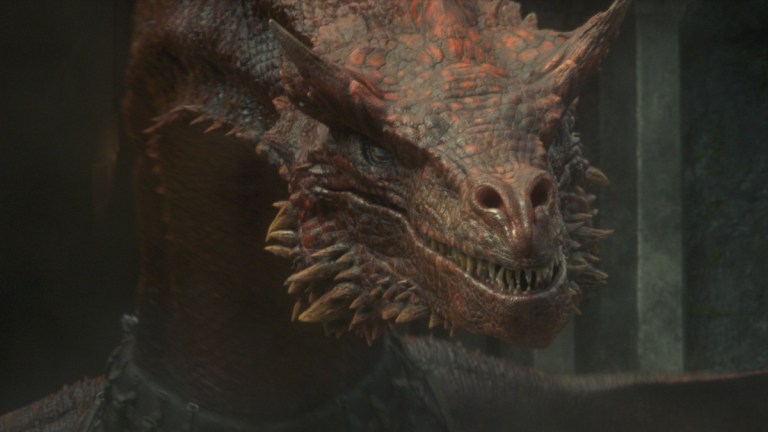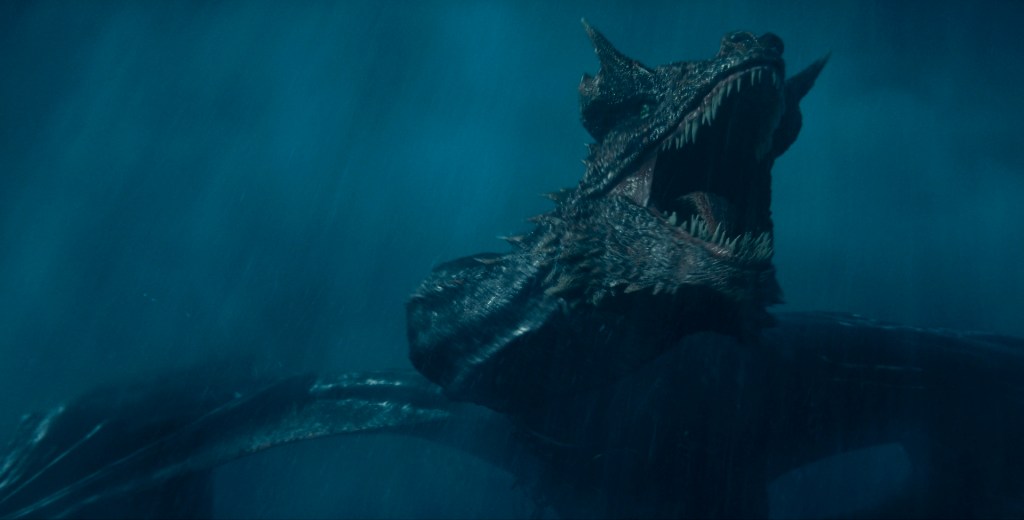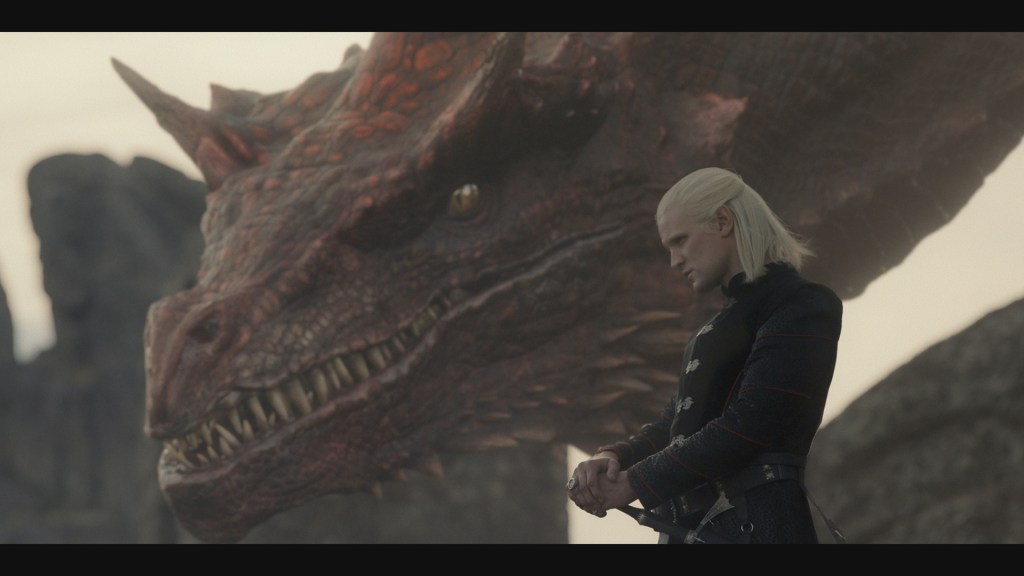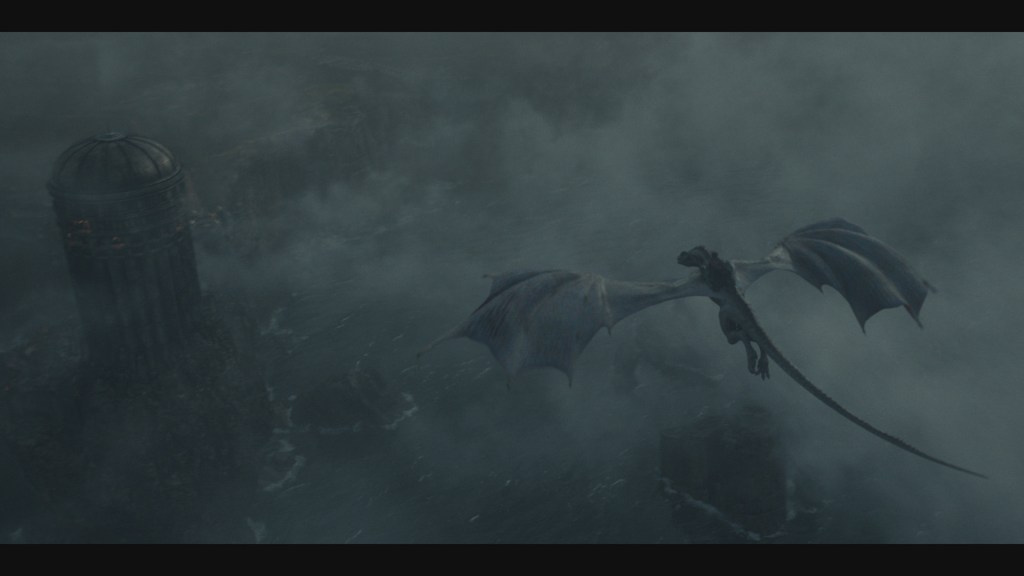A Guide to Every Dragon in House of the Dragon
The Targaryens conquered the Seven Kingdoms on the backs of dragons. Let's meet some of the beasts that give House of the Dragon its name.

This article contains spoilers for House of the Dragon through season 2 episode 7 and George R.R. Martin’s Fire & Blood.
The family feud at the center of House of the Dragon has gone from throne-room squabbling to outright conflicts, with assassins skulking down dark alleys and dragons engaging in open combat. The only thing the Targaryen family likes more than having sex with their relatives is killing them, especially when the throne is involved. It’s a complex web of siblings, half-siblings, bastard children, and sister-wife/brother-husband relationships, but thankfully, it’s easily broken down by their color scheme.
On one side, there are the Blacks, who support the cause of Viserys’ firstborn child, Queen Rhaenyra. On the other side are the Greens, who support the existing power structure in King’s Landing, headed by the hedonistic King Aegon II, the oldest child of Viserys I and his second wife, Alicent Hightower. In true Game of Thrones fashion, everyone else is caught in the middle and scrambling to pick sides. Even the dragons are not immune to this divisiveness. When a rider picks a side, the dragon inevitably follows. Except for those pesky free-agents, of course.

The Green Dragons
Vhagar
Of the three dragons that participated in Aegon’s War of Conquest, the only one still alive at the time of House of the Dragon is Vhagar. The largest of the dragons, big enough to rival even Balerion the Dread, Vhagar is currently protecting King’s Landing with his current rider, Aemond Targaryen (Ewan Mitchell). Prince Aemond took over the reins of Vhagar after the death of Laena Velaryon, following her suicide at the hands of her own dragon due to labor complications in “The Princess and the Queen.”
Aemond claimed this dragon at great personal cost, losing an eye at the hands of the ill-fated Lucerys in “Driftmark.” This incident, and the physical conflict between Alicent and Rhaenyra, only increased the bad blood between the two factions. After the death of Viserys and the crowning of Aegon Targaryen, both sides send envoys to unaligned major houses. Luke takes his dragon, Arrax, to meet with the Baratheons only to find that Aemond is already there. Luke leaves, but Aemond pursues him and Vhagar kills and consumes both Arrax and Lucerys.
As if Rhaenyra needed another reason to hate the Greens.
Dreamfyre
The mount of Helaena Targaryen (Phia Saban). Dreamfyre is the silvery-bluish dragon who laid the egg stolen by Daemon in “The Rogue Prince” and is also the dragon that nearly turned Aemond Targaryen into a crispy critter when he went into the dragon pit in “The Princess and the Queen.” She has not been seen in combat, but no doubt her protective nature will serve her well when the dragons begin to dance in earnest.
Sunfyre
The most beautiful of the dragons is Sunfyre. The golden dragon with the golden flames is the mount of King Aegon II (Tom Glynn-Carney). Sunfyre has yet to be shown on screen, but has been mentioned. Sunfyre made his season 2 debut in episode 4 “The Red Dragon and the Gold.”
Tessarion
The young Blue Queen is the fourth member of the Greens’ dragon stable. Her rider, Daeron, has not been introduced in the show yet, but is said to be serving as a ward to House Hightower in Old Town. Tessarion is known for her stunning blue flames and cobalt scales.

The Black Dragons
Syrax
The first dragon met in House of the Dragon‘s first episode, “The Heirs of the Dragon,” the yellow-scaled Syrax is the mount of the dragonrider Rhaenyra Targaryen (Emma D’Arcy). Syrax is seen again in “The Rogue Prince” as Rhaenyra goes off to confront her uncle and sometime lover Daemon after his theft of the dragon egg and first attempt at the throne.
Caraxes
The second dragon we meet in House of the Dragon‘s second episode, Caraxes is known as the Blood Wyrm for his blood red scales. He is the dragon mount of Prince Daemon Targaryen (Matt Smith), but he has been claimed by other riders before. He is one of the first dragons we see in battle in “Second of his Name,” aiding Corlys Velaryon and his own dragon fleet in the battle against Crabfeeder and the forces of the Essos Triarchy alongside the next dragon in the list.
Seasmoke
One of the youngest dragons able to bear a rider, Seasmoke plays a crucial role in “Second of His Name” as Daemon Targaryen, wounded and surrounded by enemy soldiers, is saved at the last possible moment by the arrival of the silver-gray Seasmoke and his rider, Laenor Velaryon (John Macmillan). Unlike most riders, Laenor isn’t a ride-or-die companion of Seasmoke. Instead, after Laenor’s initial marriage to Rhaenyra and the subsequent birth of her three sons (by Harwin Strong), Laenor fakes his death in “Driftmark” and escapes the pressure cooker alongside his lover, Ser Qarl. In House of the Dragon season 2, Seasmoke selects Addam of Hull (Clinton Liberty) as his new rider.
Meleys
Rhaenys Targaryen (Eve Best) and her dragon, The Red Queen Meleys, were something of a wild card in House of the Dragon. The two make their allegiance known in “The Green Council” by crashing Aegon’s coronation ceremony, quite literally. Rhaenys was freed from captivity by Erryk, and after getting her dragon back, she breaches the great hall, killing people and making threats before fleeing King’s Landing for greener pastures. Her announcement of the death of King Viserys and the ascension of Prince Aegon shocks Rhaenyra into a stillbirth.
Vermax
Vermax is the dragon of Jacaerys “Jace” Velaryon (Harry Collett), the oldest child of Queen Rhaenyra. Throughout the first season, Jacaerys is seen training with his dragon, and in “The Black Queen,” he’s seen taking his dragon north to meet with Cregan Stark, who pledges 2000 men to the Black Queen and her cause.
Arrax
Ill-fated Arrax was an original part of the Black cause, as the bonded dragon of Rhaenyra’s second son, Lucerys “Luke” Velaryon (Elliot Grihault). Luke is the one who caused Aemond to lose his eye in a conflict over Vhagar, which sows the seeds of his own destruction. After winning the Baratheon family over to his side and departing Storm’s End, Luke and Arrax were killed and eaten by Vhagar after Vhagar was burned by Arrax after Luke lost control of his dragon.
Tyraxes
Joffrey, as of now, is too young to be involved in the war for the Iron Throne, as is his dragon Tyraxes. Daemon mentions Tyraxes in “The Black Queen” as one of the assets they have on their side of the civil war.
Moondancer
Moondancer is the mount of Baela Targaryen (Bethany Antonia). A pale green dragon, with pearl horns, crest, and wing bones, Moondancer is one of the slimmest of the dragons involved in the conflict.
Vermithor
Almost 100 years old at the outbreak of the Dance of the Dragons, Vermithor is a bronze dragon with tan wings and is one of the biggest beasts in Westeros. Vermithor was originally the mount of the late King Jaehaerys I Targaryen. After his death, Vermithor has remained riderless, though Daemon makes a failed attempt to tame him in “The Black Queen.” He remained on Dragonstone and, as such, firmly in the hands of the Blacks. Humble blacksmith Hugh the Hammer (Kieran Bew) claims Vermithor in season 2 episode 7.
Silverwing
Silverwing, the mount of the late Queen Alysanne Targaryen, is a silver dragon who is most often seen in the company of Vermithor on the Dragonmount, near Dragonstone. She is claimed by Ulf the White (Tom Bennett) in season 2 episode 7.

The Free Agents
Sheepstealer, Cannibal, and Grey Ghost
The three wild dragons, the muddy brown Sheepstealer, Gray Ghost, and the pitch-black, green-eyed dragon-eater Cannibal, have yet to be shown during House of the Dragon, but they’re out there, and everyone knows they’re out there. Whereas Silverwing and Vermithor are dragons who have been tamed, trained, and ridden in the past, the three wild dragons are much more dangerous, tempting fruit for would-be dragon riders.
